Boeing's Starliner spacecraft
Boeing's Starliner is one of two US spacecraft tasked by Nasa with transporting astronauts to and from the International Space Station (ISS). The vehicle is expected to help usher in a new era of private "taxi services" operating just above the Earth.
When the space shuttle was retired in 2011, Nasa became reliant on Russia for transporting its astronauts to the ISS.
In the meantime, Nasa worked on handing this job over to US companies. The space agency chose Boeing and SpaceX to develop new vehicles with the intention of purchasing seats on them for its crew once they started flying.
Starliner has an Apollo-like design with conical sides - a shape that's stable when the capsule is plummeting at high speed through the Earth's atmosphere. But it has more autonomy than either the Apollo spacecraft or the shuttle. Boeing's vehicle travels to the ISS and docks with little to no intervention from astronauts.
It's also designed to be safer. Unlike the space shuttle, Starliner has an escape system that can propel the crew away from its rocket if an emergency occurs during launch.
Building Starliner
The spacecraft's full name is Starliner CST-100. "CST" stands for Crew Space Transportation and "100" refers to the Kármán line, the official boundary of space, 100km above the Earth.
The vehicle comes in two main parts, which are attached to each other from launch until shortly before re-entry:
- A reusable crew module which carries the astronauts inside
- A service module which provides power and propulsion
The internal core of the crew module is called the pressure vessel and is manufactured in two halves. Each half is made from a single piece of metal, rather than from different pieces welded together.
Eliminating welds reduces the chance of defects that could weaken the structure.
After the two halves of the vessel are sealed together, the sloping sides are enclosed within a protective envelope called the backshell.
Blankets made of silica and woven glass cover the outside, but areas that receive more heating on re-entry are shielded with ceramic tiles like those used on the space shuttle.
Interior design
The crew module measures 4.6m at its base, with a cabin that accommodates up to seven crew. Nasa missions will take between four and five passengers per flight, swapping the seats for extra cargo storage. If the fifth seat is vacant, Boeing has the option to sell it to a space tourist or carry an astronaut from another country.
The control console has two display screens. While SpaceX opted for touchscreens in its Crew Dragon vehicle, Boeing went for the traditional approach of switches and buttons.
Because most spacecraft operations are automated, crew members won't have to engage much with the vehicle. But if, for any reason, they have to assume manual control, the traditional layout gives them everything they need to fly the ship.
Former Nasa astronaut Christopher Ferguson, who now works for Boeing, played an instrumental role in Starliner's design.
"To become a part of that was just very compelling. I couldn't give that up for any other opportunity that's out there," Ferguson explained.
Space 'onesie'
During lift-off, ascent and re-entry, crew members wear the "Boeing Blue" flight suit, designed to protect them from a depressurisation event, in which air is lost from the capsule.
The company says it is 40% lighter and more flexible than earlier generations of spacesuit. The shoes are more like cross trainers than heavy boots and the gloves are touchscreen-sensitive, so the crew can use tablet computers during flight.
Unlike other designs, this one features a flexible hood and visor instead of a hard helmet.
The idea was prompted by Ferguson's experience of returning to Earth in the bulky suits used on the shuttle. After two weeks in microgravity, Ferguson said the metal ring where the helmet attached would push down on his shoulders, causing them to ache.
How Starliner gets to the space station
Starliner can ride one of several rockets to orbit, but will use a modified Atlas V for its first few flights. The 58m-tall Atlas is one of the most reliable rockets available and launches from Florida's Cape Canaveral Air Force Station.
About 31 minutes after lift-off, Starliner - having now separated from the upper stage of its rocket - fires four thrusters to put itself in the right orbit.
It then embarks on a 24-hour orbital "chase" to catch up with the space station for rendezvous and docking.
After spotting the ISS as a bright point of light with its onboard cameras, Starliner manoeuvres closer to the orbiting outpost. It pauses outside a 200m "keep-out sphere" until flight controllers clear it to begin the autonomous docking process.
The onboard computers analyse data from sensors on the outside of the craft. The information informs an intricate orbital ballet that occurs as hundreds of finely tuned thruster firings guide Starliner into dock.
Starliner is designed to stay in orbit for around seven months.
How does it return to Earth?
After separating from the ISS, the spacecraft fires its thrusters over the Pacific Ocean to begin the process of returning to Earth.
The crew module separates from the service module in preparation for the plunge through the atmosphere. During the fiery return, the heatshield covering the base of the capsule is exposed to temperatures of up to 1,650C (3,000F).
The shield is made from an "ablative" material that slowly sinters away to carry off much of this extreme heat.
According to Boeing engineer Tori Wills Pedrotty: "The ablative is only a couple of inches thick, and at the outside, during re-entry, it's 3,000F. Two or three inches [further in], it's only 300F.
"So we're able to convert that heat and dissipate it out, so that the astronauts inside - after only a couple more layers of insulation - sit at a balmy 75 degrees."
At around 9km (30,000ft) above the ground, two drogue parachutes are deployed to begin slowing and stabilising the capsule.
The capsule's three main parachutes then open.
At an altitude of about 900m (3,000ft), the landing airbags inflate. These provide the final bit of cushioning to protect astronauts when the spacecraft touches down at one of five designated sites across the western US.
Starliner will be the first US orbital capsule to parachute on to land, rather than the ocean. Boeing says it's quicker and cheaper to refurbish a spacecraft if it hasn't been immersed in salt water.
Each spacecraft can be re-used up to 10 times, with a six-month turnaround time.
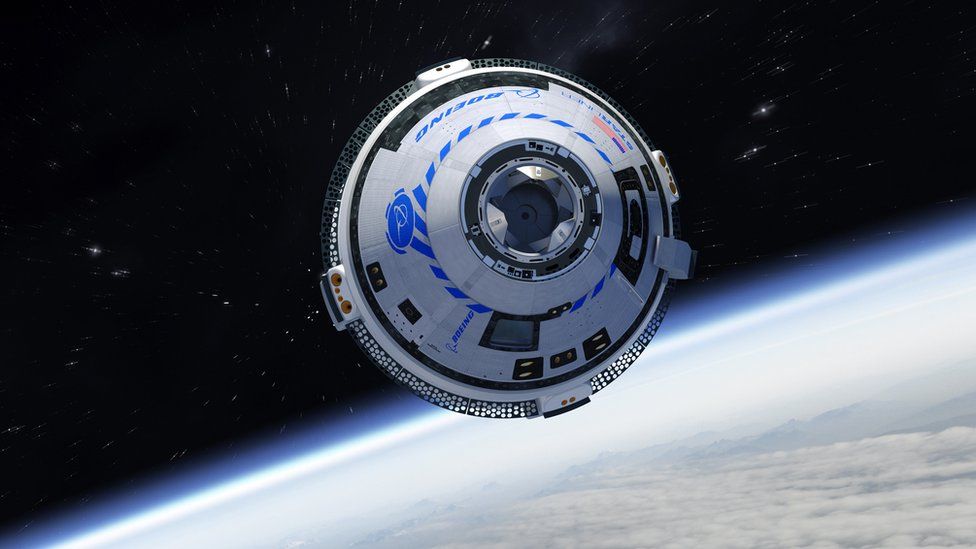
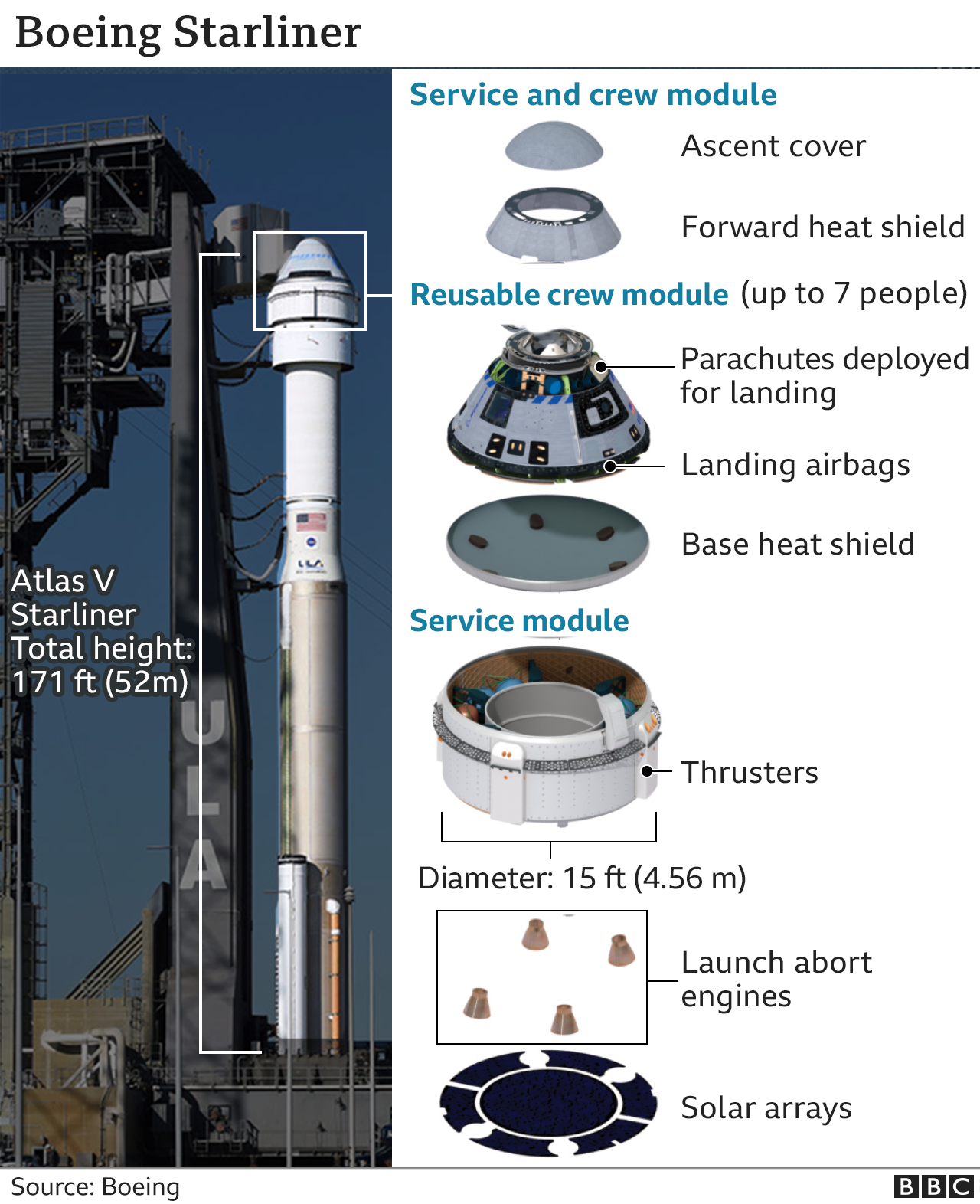
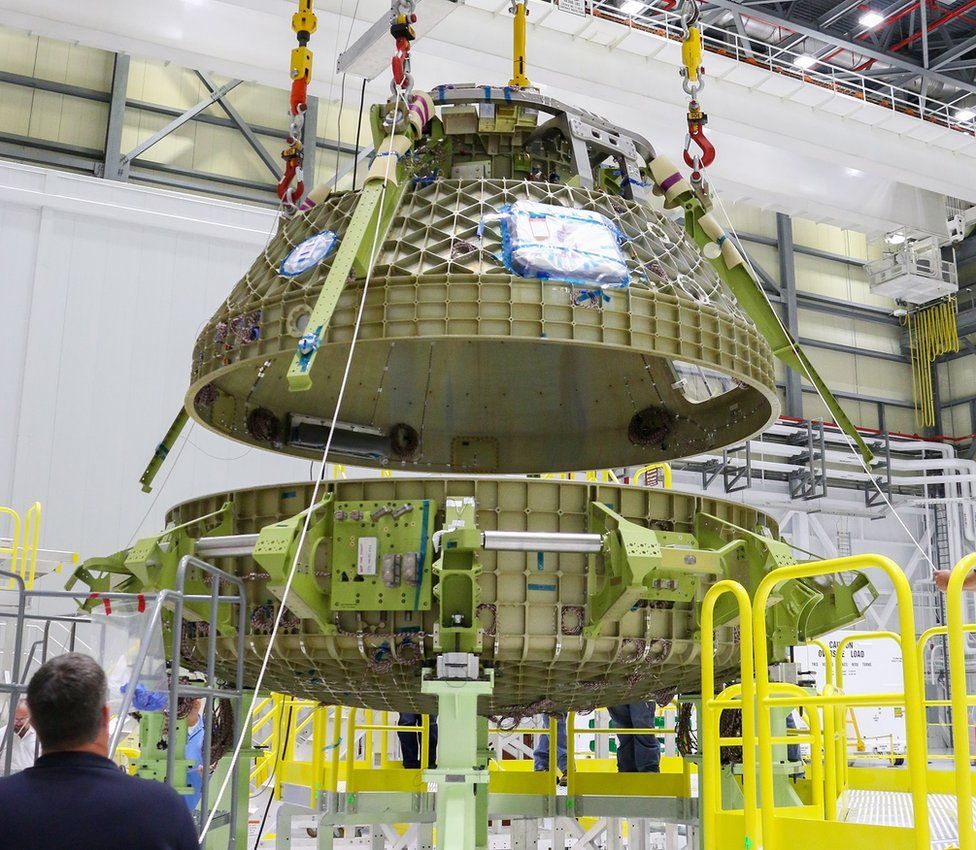
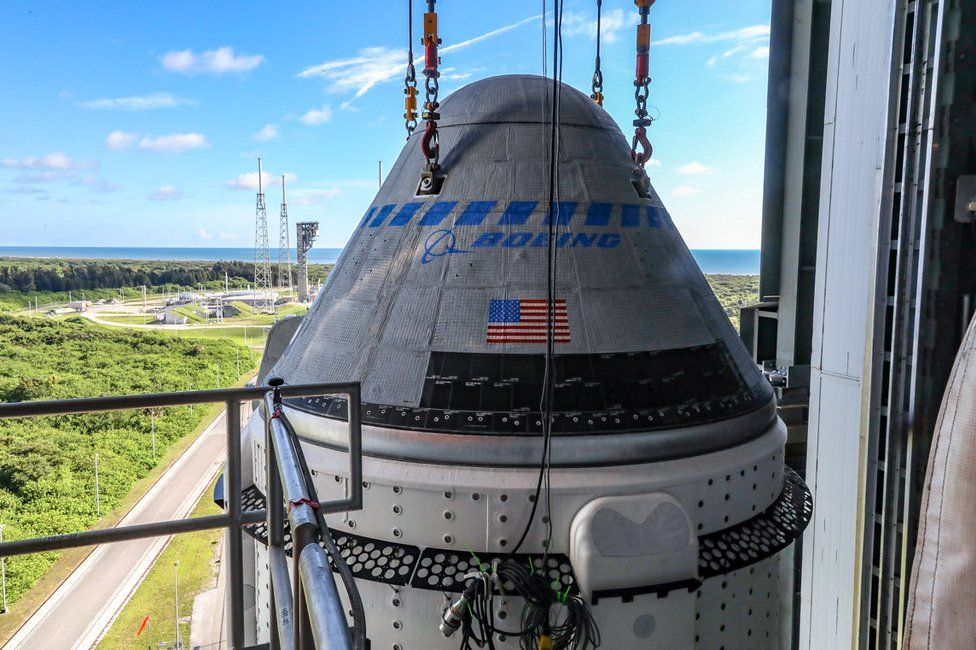

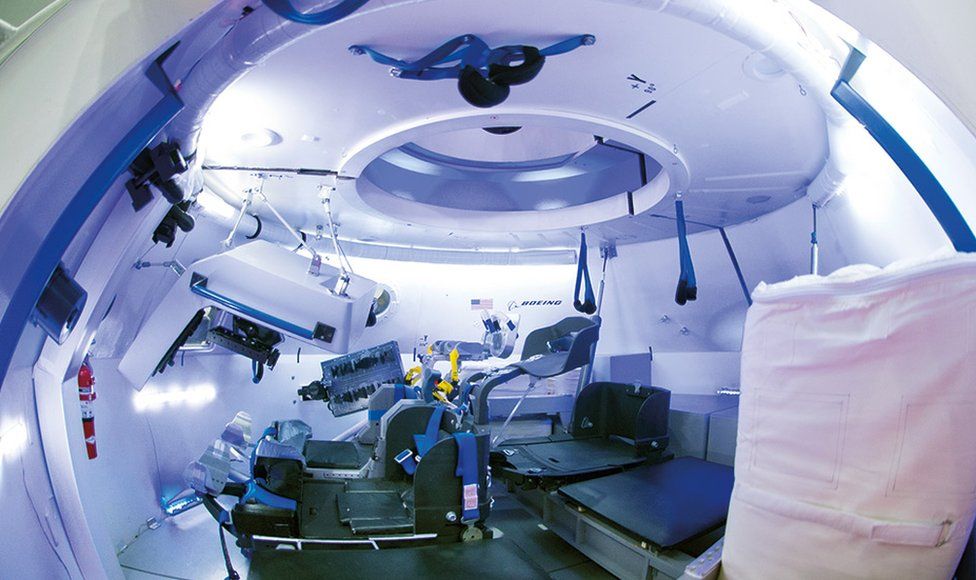
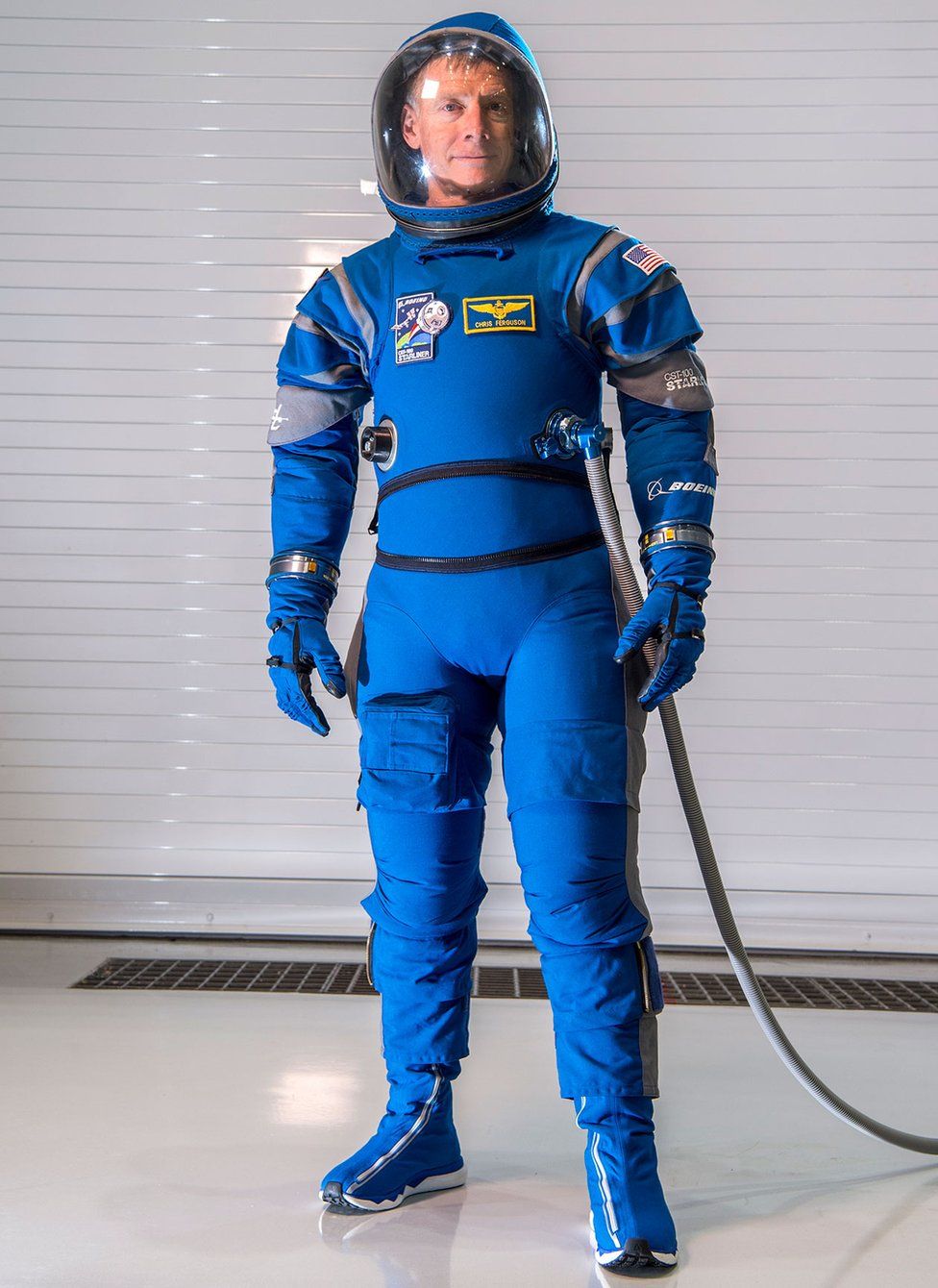
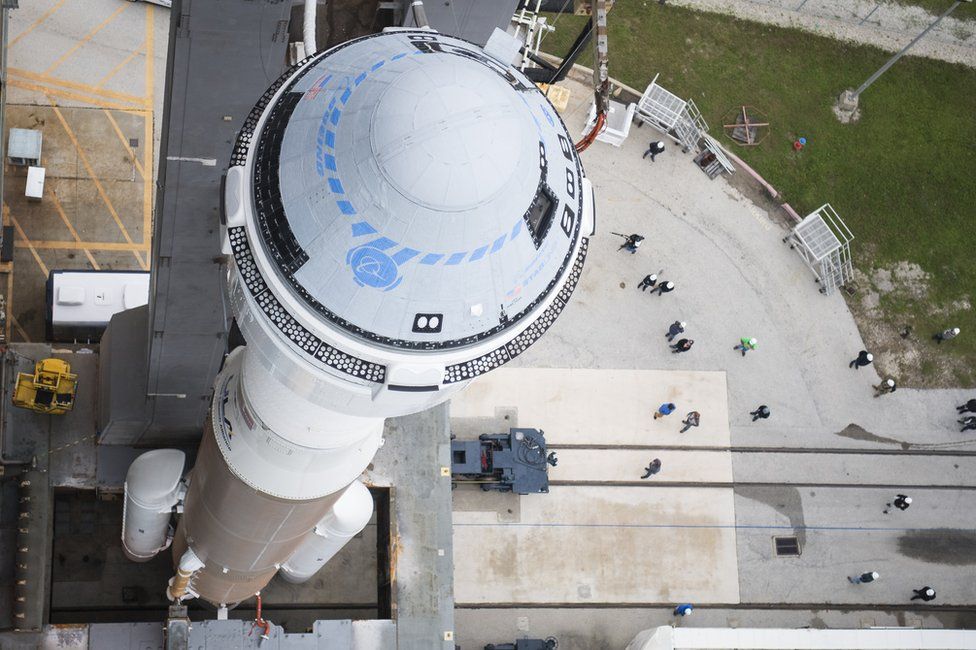
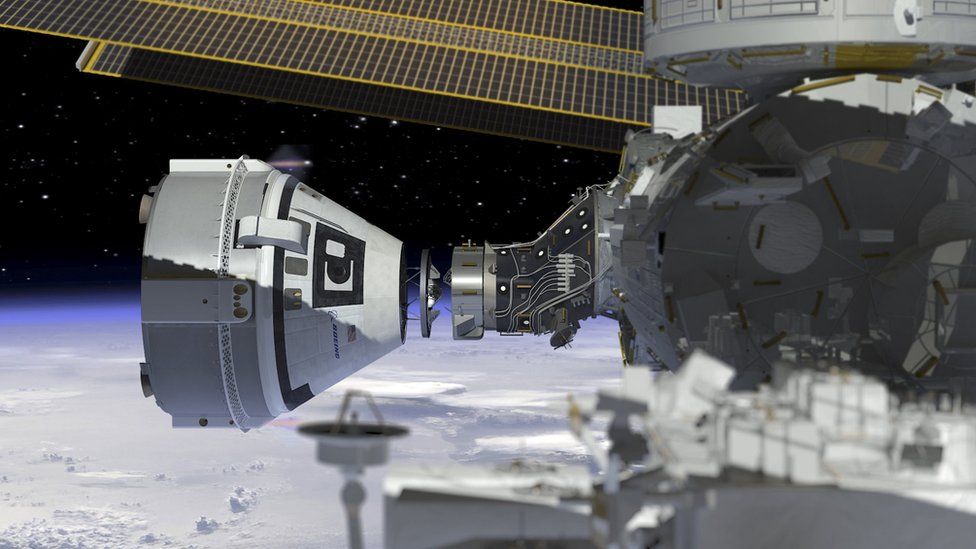
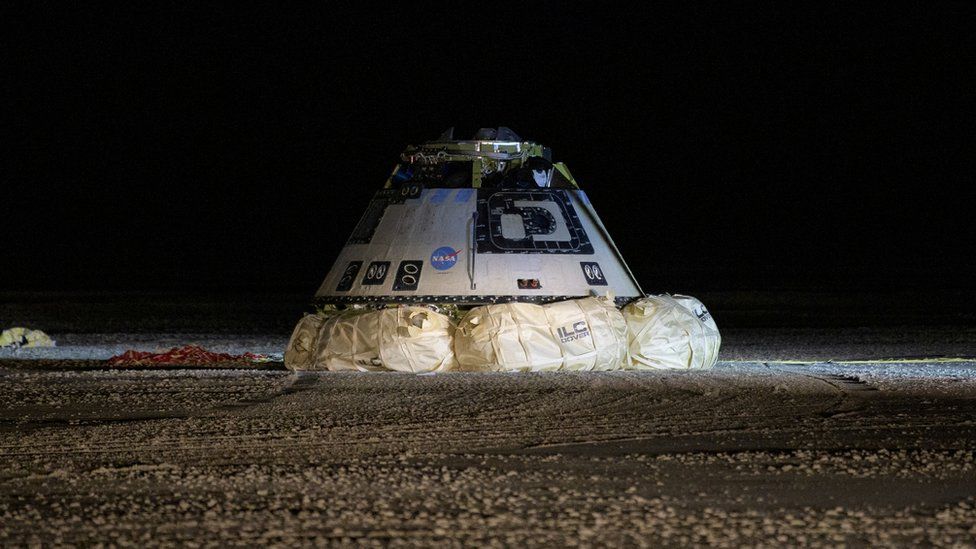
Comments
Post a Comment